The Great Sodium Disaster 0f 1998 |
In the Advanced Chemistry class, we have been studying thermodynamics and the ability of chemists to predict if reactions will occur based on the driving forces of nature. In order to observe and practice these predictive powers, we chose to study the reaction of sodium metal with water. Sodium is a very reactive metal which must be handled with care. Sodium will react with oxygen in the atmosphere to make sodium oxide [4Na(s) + O2(g) --> 2Na2O(s)]. Sodium will also react with water to make sodium hydroxide base and hydrogen gas [Na(s) + H2O(l) --> NaOH(aq) + H2(g) + heat]. The reaction is exothermic enough to cause the flammable hydrogen gas to ignite explosively with oxygen in the atmosphere to make new water molecules [2H2(g) + O2(g) --> 2H2O(g)]. For these reasons, sodium is usually kept under mineral oil to keep it from reacting with these common substances. We wanted to observe these spectacular reactions and collect data to test our predictions. We devised an experimental set-up that included a large battery jar with 4.0 L of water, a temperature probe, and a pH probe. In order to minimize the risk of being hit with burning pieces of sodium, we chose to carry out the reaction in a section of PVC pipe that would direct any projectiles in a flight path that we controlled. In our early trials, we used small pieces of sodium and a regular white PVC pipe, but we were disappointed that we could not directly see the action (at least until it came out of the top of the pipe). It took a lot of time and phone calls, but we were able to locate a plastics distributor that had a leftover cut piece of clear PVC and was willing to provide it free of charge (including overnight shipping!). We also decided to drop the sodium from a remote location which involved tying the piece with kite string, suspending the piece inside the top of the pipe, and then cutting the string from a safe distance. The reaction was spectacular, surprising, and disappointing. The force of the exploding hydrogen was surprisingly strong in the downward direction. The water was pushed down against the bottom of the jar (and against the Earth) with enough force to separate the bottom of the jar from the rest of the glass. Thus, the water left the jar and left us without data. Our probes were measuring the temperature and pH of air. Oh well, time to retool our set-up and try again. |
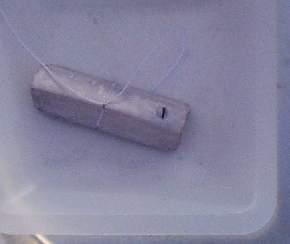 Our handsome lump of sodium (24.9 g) |
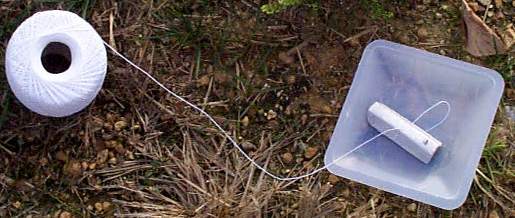 The sodium is knotted with kite string |
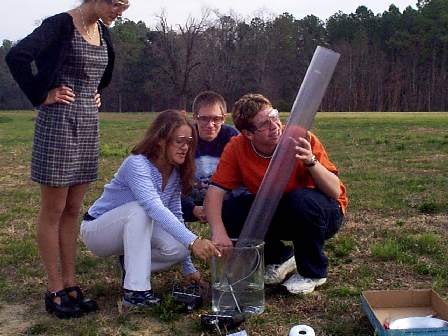 Students set up the probes to collect our data |
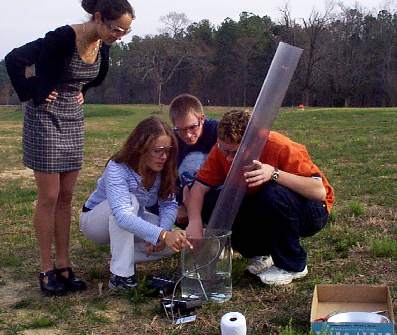 Making sure it's ready |
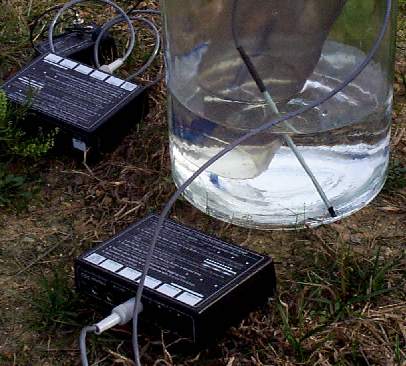 A close-up of the temperature probe and interface |
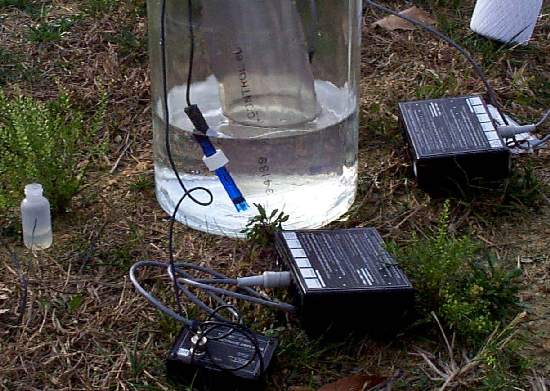 A pH probe is on the other side |
 Everything is ready except the sodium |
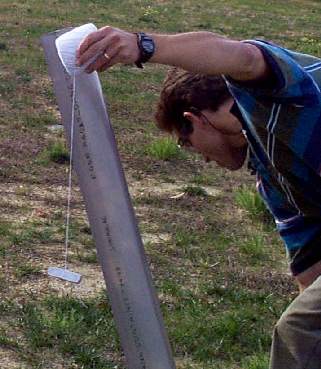 Preparing to lower the sodium into the pipe |
 Here it goes |
 The string is ready to be cut |
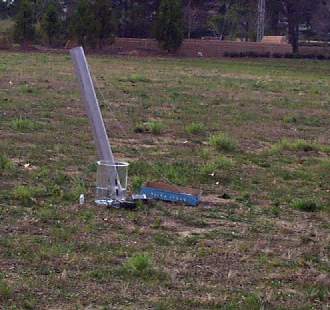 The string has been cut: 3, 2, 1, ........... |
 Evidence of a reaction?? |
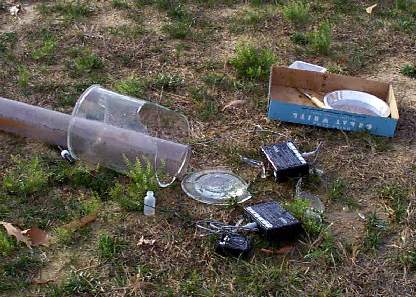 Something definitely happened to our container. It appears that more force was delivered to the bottom of the container rather than out the top of the pipe. Can rearranging atoms do that? |